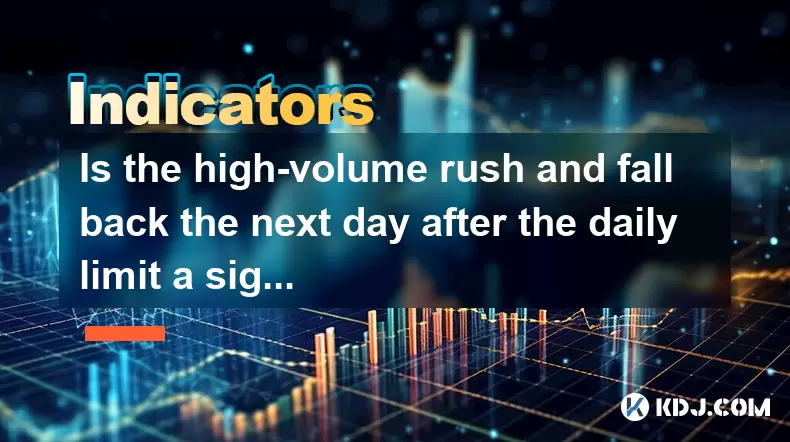-
 Bitcoin
Bitcoin $118,841.1054
1.02% -
 Ethereum
Ethereum $3,364.2689
7.44% -
 XRP
XRP $3.0337
3.93% -
 Tether USDt
Tether USDt $1.0004
0.04% -
 BNB
BNB $708.2059
2.49% -
 Solana
Solana $173.2385
5.74% -
 USDC
USDC $0.9999
-0.01% -
 Dogecoin
Dogecoin $0.2121
6.85% -
 TRON
TRON $0.3090
2.81% -
 Cardano
Cardano $0.7628
2.25% -
 Hyperliquid
Hyperliquid $46.8391
-2.08% -
 Stellar
Stellar $0.4537
0.15% -
 Sui
Sui $3.9529
-2.88% -
 Chainlink
Chainlink $16.6414
3.72% -
 Hedera
Hedera $0.2354
1.52% -
 Bitcoin Cash
Bitcoin Cash $499.1285
0.43% -
 Avalanche
Avalanche $22.6400
0.57% -
 Shiba Inu
Shiba Inu $0.0...01438
4.88% -
 UNUS SED LEO
UNUS SED LEO $8.8507
-0.64% -
 Toncoin
Toncoin $3.1498
2.35% -
 Litecoin
Litecoin $97.4954
1.21% -
 Polkadot
Polkadot $4.1541
1.50% -
 Monero
Monero $331.4406
-1.03% -
 Pepe
Pepe $0.0...01350
5.24% -
 Uniswap
Uniswap $8.9103
-5.01% -
 Bitget Token
Bitget Token $4.7540
4.51% -
 Dai
Dai $0.9999
-0.02% -
 Ethena USDe
Ethena USDe $1.0008
0.00% -
 Aave
Aave $322.3328
-1.63% -
 Bittensor
Bittensor $431.8026
-0.50%
Is the high-volume rush and fall back the next day after the daily limit a signal for shipment?
A high-volume rush followed by a fall back after hitting the daily limit may signal profit-taking or whale distribution in crypto markets.
Jun 29, 2025 at 03:42 pm

Understanding High-Volume Rush and Fall Back After Daily Limit
In the volatile world of cryptocurrency trading, patterns often emerge that traders interpret as signals for buying or selling. One such pattern is a high-volume rush followed by a fall back the next day after hitting the daily limit. This phenomenon raises questions among traders about whether it's a signal for shipment — in other words, a sign that large players (often referred to as "whales") are offloading their holdings.
A high-volume rush typically refers to a sudden spike in trading volume accompanied by a sharp price movement, either upward or downward. When this happens right before a coin hits its daily price limit, and then the price retreats the following day, it creates a candlestick pattern that many traders analyze closely.
What Does a Daily Limit Mean in Cryptocurrency?
Before diving into the implications of this pattern, it’s important to understand what a daily limit means in the context of cryptocurrency exchanges. Some platforms impose price limits to prevent excessive volatility and protect traders from wild price swings. When a cryptocurrency reaches its upper or lower daily limit, trading may be paused or restricted until the next trading session.
This mechanism is more common on certain exchanges, particularly those catering to retail investors. The presence of a daily limit can cause unusual behavior in price charts, especially when combined with high trading volumes just before the limit is reached.
Analyzing the High-Volume Rush Pattern
When a cryptocurrency experiences a high-volume rush, it often indicates strong buying or selling pressure. If this occurs right before hitting the daily limit, it might suggest that large orders are being executed rapidly, possibly by institutional or whale investors. These entities may be trying to push the price to the maximum allowed level within a single session.
The next-day pullback could indicate several things:
- Retail traders jumping in after seeing the surge, only to face disappointment.
- Profit-taking by early buyers or whales who pushed the price up.
- A lack of sustained demand after the initial momentum fades.
It’s crucial to note that while these movements resemble pump-and-dump schemes, they aren't always indicative of manipulation. However, the pattern does warrant closer scrutiny, especially if it repeats frequently for the same asset.
Is This a Signal for Shipment?
To determine whether this pattern is a signal for shipment, one must look at order book data, depth charts, and on-chain metrics. In some cases, a high-volume rush followed by a fall back can indeed indicate that large holders are distributing their coins.
Key signs to watch for include:
- Large sell walls appearing immediately after the price peaks.
- A sudden drop in open interest on futures markets.
- An increase in outflows from exchange wallets to private ones.
If these indicators align with the observed price action, it strengthens the hypothesis that the pullback is due to profit-taking or dumping by big players.
However, not every such movement is a clear signal for shipment. Market sentiment, news events, and broader macroeconomic factors can also contribute to similar patterns.
How to Interpret This Pattern in Your Trading Strategy
For individual traders looking to incorporate this pattern into their strategy, several steps should be considered:
- Monitor Volume Spikes: Use tools like TradingView or CoinGecko to track sudden increases in volume. Pay attention to whether the volume coincides with the daily limit being hit.
- Check Order Book Depth: Platforms like Binance or Kraken allow users to view real-time order books. Look for signs of large orders being placed and then canceled or executed.
- Use On-Chain Analytics: Tools such as Glassnode or Santiment provide insights into wallet movements, including whether large amounts of a token are moving to exchanges — a potential red flag.
- Avoid FOMO Trading: Don’t jump into a trade simply because of a volume spike. Wait for confirmation through multiple indicators.
- Set Stop-Loss Orders: Given the unpredictable nature of crypto markets, setting stop-losses can help mitigate losses if the pattern turns out to be misleading.
Technical Indicators That Can Help Confirm the Pattern
Several technical indicators can be used alongside this pattern to improve accuracy:
- Volume Profile Visible Range (VPVR): Helps identify where most of the trading activity occurred during the period.
- Relative Strength Index (RSI): Can show overbought conditions before the fall back, indicating unsustainable momentum.
- Order Block Analysis: Looks for areas where large orders were likely placed, which can serve as support or resistance zones.
- On-Balance Volume (OBV): Tracks cumulative volume to see if volume supports price action or contradicts it.
By combining these tools with price action analysis, traders can better assess whether the high-volume rush and fall back is a genuine shipment signal or just normal market fluctuation.
Frequently Asked Questions
Q: What does “shipment” mean in cryptocurrency trading?
A: In crypto terminology, "shipment" refers to a situation where large holders or institutions begin selling off significant amounts of an asset, often leading to a price drop. It implies distribution rather than accumulation.
Q: How can I differentiate between a genuine pump and a whale dump?
A: Look for abnormal volume spikes, check on-chain movements, and analyze order book depth. Whale dumps often leave behind large sell walls and rapid outflows from exchanges.
Q: Are daily limits common across all crypto exchanges?
A: No, daily limits are not universal. They are more commonly found on Asian exchanges and some centralized platforms targeting novice traders. Major global exchanges like Binance or Coinbase generally do not use them.
Q: Should I short a cryptocurrency if I see this pattern?
A: Shorting based solely on this pattern can be risky. Always confirm with volume analysis, order flow, and on-chain data before making a decision. Risk management is essential.
Disclaimer:info@kdj.com
The information provided is not trading advice. kdj.com does not assume any responsibility for any investments made based on the information provided in this article. Cryptocurrencies are highly volatile and it is highly recommended that you invest with caution after thorough research!
If you believe that the content used on this website infringes your copyright, please contact us immediately (info@kdj.com) and we will delete it promptly.
- Bitcoin Trading Volume in Q2 2025: A New York Minute
- 2025-07-17 14:30:12
- Bitcoin, SpacePay, and Your Cappuccino: The Future of Crypto Payments is Here!
- 2025-07-17 14:30:12
- Top Cryptos: Dogwifhat's Comeback, Arctic Pablo's Presale Adventure
- 2025-07-17 14:50:11
- Morgan vs. Peace: The US Mint's Silver Showdown
- 2025-07-17 14:50:11
- Ethereum Rising: Breaking $3400 – What's Fueling the Surge?
- 2025-07-17 14:55:11
- Bitcoin, Selling, and Happiness: A Contrarian's View from a New Yorker
- 2025-07-17 15:10:11
Related knowledge

Advanced RSI strategies for crypto
Jul 13,2025 at 11:01am
Understanding the Basics of RSI in Cryptocurrency TradingThe Relative Strength Index (RSI) is a momentum oscillator used to measure the speed and chan...

Crypto RSI for day trading
Jul 12,2025 at 11:14am
Understanding RSI in the Context of Cryptocurrency TradingThe Relative Strength Index (RSI) is a momentum oscillator used to measure the speed and cha...

Crypto RSI for scalping
Jul 12,2025 at 11:00pm
Understanding RSI in the Context of Crypto TradingThe Relative Strength Index (RSI) is a momentum oscillator widely used by traders to measure the spe...

What does an RSI of 30 mean in crypto
Jul 15,2025 at 07:07pm
Understanding RSI in Cryptocurrency TradingRelative Strength Index (RSI) is a momentum oscillator widely used in cryptocurrency trading to measure the...

What does an RSI of 70 mean in crypto
Jul 13,2025 at 06:07pm
Understanding the RSI Indicator in Cryptocurrency TradingThe Relative Strength Index (RSI) is a widely used technical analysis tool that helps traders...

Does RSI work in a bear market for crypto
Jul 16,2025 at 01:36pm
Understanding RSI in Cryptocurrency TradingThe Relative Strength Index (RSI) is a momentum oscillator used by traders to measure the speed and change ...

Advanced RSI strategies for crypto
Jul 13,2025 at 11:01am
Understanding the Basics of RSI in Cryptocurrency TradingThe Relative Strength Index (RSI) is a momentum oscillator used to measure the speed and chan...

Crypto RSI for day trading
Jul 12,2025 at 11:14am
Understanding RSI in the Context of Cryptocurrency TradingThe Relative Strength Index (RSI) is a momentum oscillator used to measure the speed and cha...

Crypto RSI for scalping
Jul 12,2025 at 11:00pm
Understanding RSI in the Context of Crypto TradingThe Relative Strength Index (RSI) is a momentum oscillator widely used by traders to measure the spe...

What does an RSI of 30 mean in crypto
Jul 15,2025 at 07:07pm
Understanding RSI in Cryptocurrency TradingRelative Strength Index (RSI) is a momentum oscillator widely used in cryptocurrency trading to measure the...

What does an RSI of 70 mean in crypto
Jul 13,2025 at 06:07pm
Understanding the RSI Indicator in Cryptocurrency TradingThe Relative Strength Index (RSI) is a widely used technical analysis tool that helps traders...

Does RSI work in a bear market for crypto
Jul 16,2025 at 01:36pm
Understanding RSI in Cryptocurrency TradingThe Relative Strength Index (RSI) is a momentum oscillator used by traders to measure the speed and change ...
See all articles

























































































